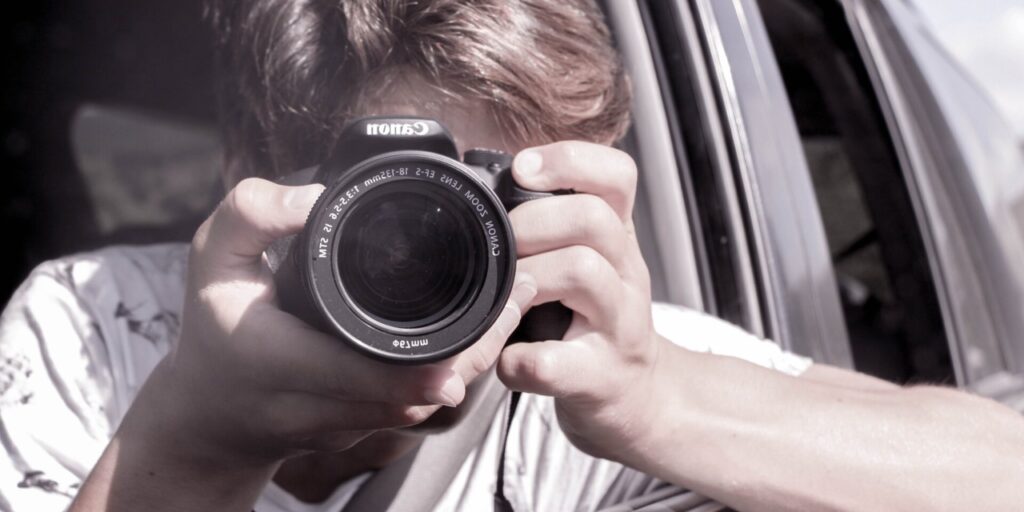- Higher speeds on Ontario highways may lead to more collisions - May 9, 2024
- Optional coverage is the wrong way to cut insurance rates - April 22, 2024
- A primer on successfully claiming LTD benefits in Ontario - March 18, 2024
By Paul Russell, LegalMatters Staff • People suing for damages after being injured in an accident may feel that someone is watching them. That suspicion could be justified, says Ontario personal injury lawyer Joshua Goldberg.
“Since personal injury claims can amount to hundreds of thousands of dollars or more, insurance companies have a real incentive to prove that a plaintiff’s injuries are not as bad as they claim,” says Goldberg, principal of Joshua Goldberg Law.
“The larger the claim, the more likely surveillance will occur. If you suspect someone is watching as you doing yardwork or physical tasks around the home, don’t think that you are just being paranoid,” he says. “Insurance investigators could very well be watching your home, looking for evidence that you are exaggerating your injuries to justify a larger settlement.”
Goldberg tells LegalMattersCanada.ca that it is impossible to say how common this type of surveillance is since insurers do not have to disclose that information.
‘Surveillance is perfectly legal’
“While this monitoring can seem intrusive, personal injury surveillance is perfectly legal, as long as it does not violate your privacy,” he says.
Goldberg explains that investigators working for the defendant cannot pretend to be law enforcement agents. They are also not allowed to trespass on private property, tamper with mail, install a GPS tracking device on vehicles or record a conversation without your consent, he adds.
“In some cases, investigators will just sit outside the plaintiff’s home and take photos of the person engaged in various activities, in the hope those images will convince the court the claim is unwarranted,” Goldberg says. “These images can convince the court to side with the insurer.
Videos can contradict testimony
He gives the example of a 2011 Ontario Superior Court of Justice judgment where the judge dismissed a case where the plaintiff was claiming unspecified non-pecuniary damages resulting from an auto accident that he said left him in “constant pain” and not able to socialize or work.
However, surveillance videos introduced by the defendant showed the man carrying groceries and operating a lawn mower and other yard equipment that he lifted in and out of the back of a truck, court documents note.
“In a nutshell, the surveillance tapes disclose the plaintiff participating in activities he denied at trial he could do … I am quite certain that [he] has some complaints that are related to injuries from the June 2003 accident [but] I am not persuaded that they are as disabling as he alleges or that they have required him to cease participating in activities that he formerly enjoyed, including his employment,” the judge wrote.
- The proper gear reduces the risk of injury to motorcyclists
- Riding a motorcycle can be exciting – until an accident
- You have been injured in a boating accident. Now what?
Injured parties must also be mindful of what they post on social media platforms, Goldberg says.
“If you claim to be injured, but photos show you engaged in sports or other demanding activities, the defendant can use those images against you,” he says.
Insurers mine social media
Goldberg gives the example of a 2018 arbitration hearing, stemming from a collision where a vehicle was rear-ended, injuring a 17-year-old passenger and her mother.
According to arbitration documents, the daughter’s injuries at first appeared minor. But as months went on she suffered ongoing pain and her life “drastically changed,” including having a mental breakdown and suicidal thoughts, which led to her admittance to hospital.
After being released she tried various jobs, the judgment notes, including being a model in the Caribana Festival Parade in Toronto, but she was unable to stay in any position for an extended period.
During this time she sought accident benefits through her insurance company, which responded by mining her social media feeds and finding photos of her taking part in Caribana and other social events, the judgment states.
The photos were introduced as evidence of her well-being. At one point in the hearing, the lawyer for the insurer noted that the “Applicant looked too pretty to be sick,” according to court documents.
The arbitrator sided with the plaintiff against the insurer. As the judgment notes, “the conduct and borderline harassment demonstrated by the insurer … is rarely ever seen.”
Steps to take after an injury
Goldberg says he advises injured clients who are claiming compensation for their pain and suffering after an accident to be aware that their activities may be monitored by the defendant.
“Anything that you do in public may be captured on film, in an attempt to erode your credibility,” he says.
Goldberg also tells clients not to downplay or disguise their suffering for the benefit of friends and family.
“Think of how your actions may appear to others,” Goldberg says. “Don’t exaggerate your injury, but don’t conceal it at the same time, as they are unaware of how you are truly feeling inside.”

